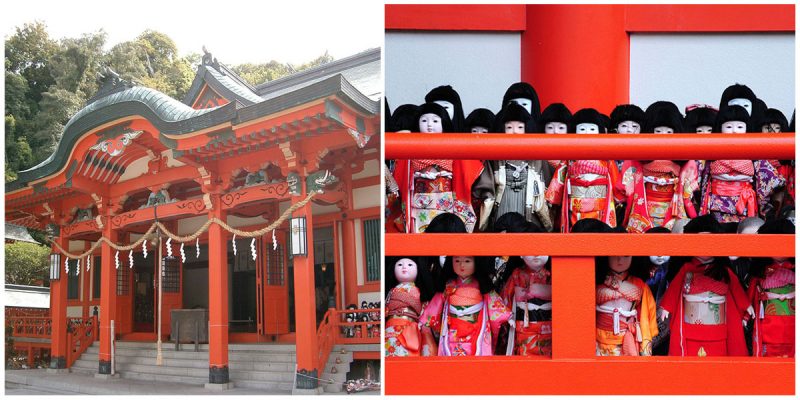There are various types of Japanese dolls, some representing children and babies, some fairy-tale characters, gods, and demons, and also everyday Japanese people. Many of the dolls have a long tradition and a good number of people in Japan seem to find them a little mysterious. They believe that the dolls have souls, and if they just threw them in the garbage they might come back to haunt to the person like a ghost.
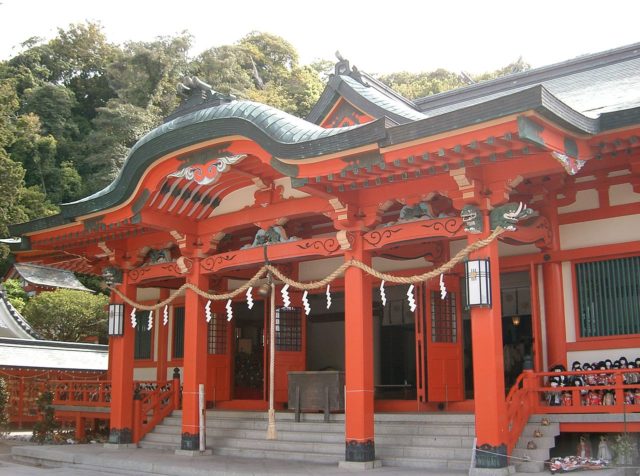
The dolls are still made today for household shrines, for formal gift-giving, or for festival celebrations such as Hinamatsuri. Hinamatsuri, also called Doll’s Day or Girl’s Day, is a special day in Japan celebrated each year on March 3.
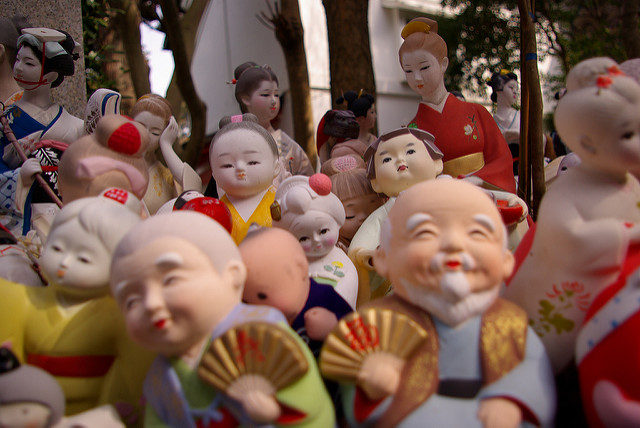
Awashima jinja in Wakayama is one of the shrines where these festivals are celebrated. The shrine is filled with an enormous collection of dolls. The most known festival celebrated at this shrine is called nagashi bina ( celebrated during the Hinamatsuri festival) in which boatloads of Hina dolls are launched into the ocean. With the ritual, parents celebrate their daughters’ happiness, growth, and good health.
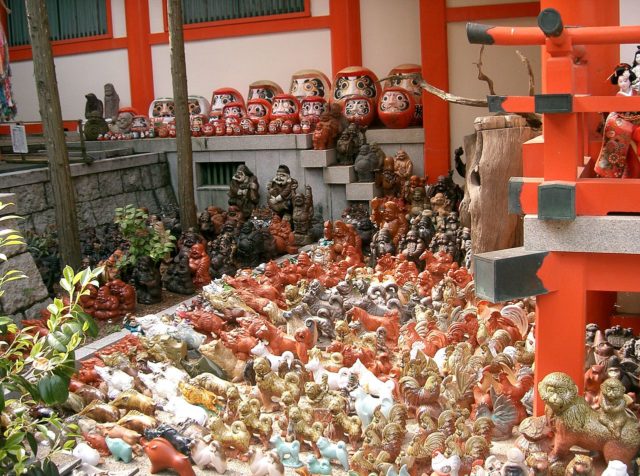
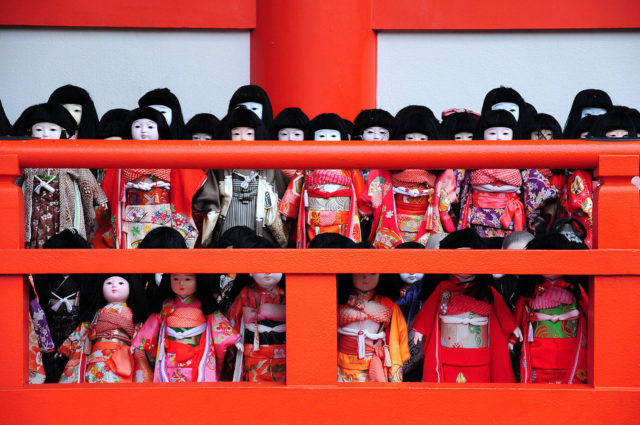
Hina dolls are the most popular dolls in the Awashima shrine. There are a lot of different dolls in this shrine, but Hina is the most sacred. There are a lot of animal dolls, like cats, owls, dogs and monkeys.
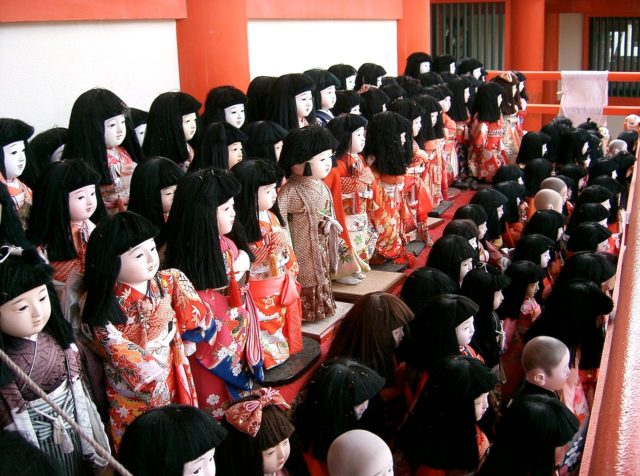
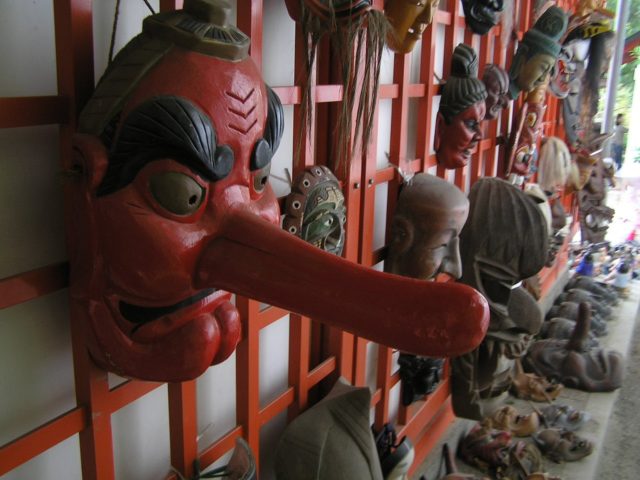
The cat dolls are known as Maneki-Neko, and they are often believed to bring good luck to the owner. On the walls of the shrine, there are various masks of the Noh tradition, such as the female Onna–kei masks, Tengu masks, Onryo-kei, Ondeko-masks, and Kitsune masks.
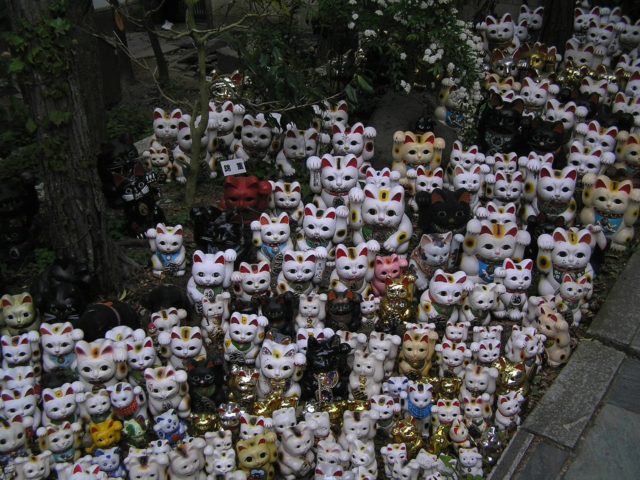
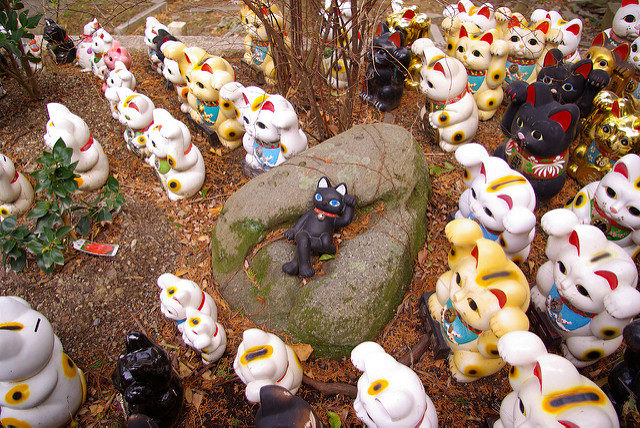
The shrine looks like a big toy store filled with colorful dolls and figurines. The Awashima jinja is a “women’s shrine”, and it is the home of over a thousand traditional dolls that bring luck to over a thousand little girls.
